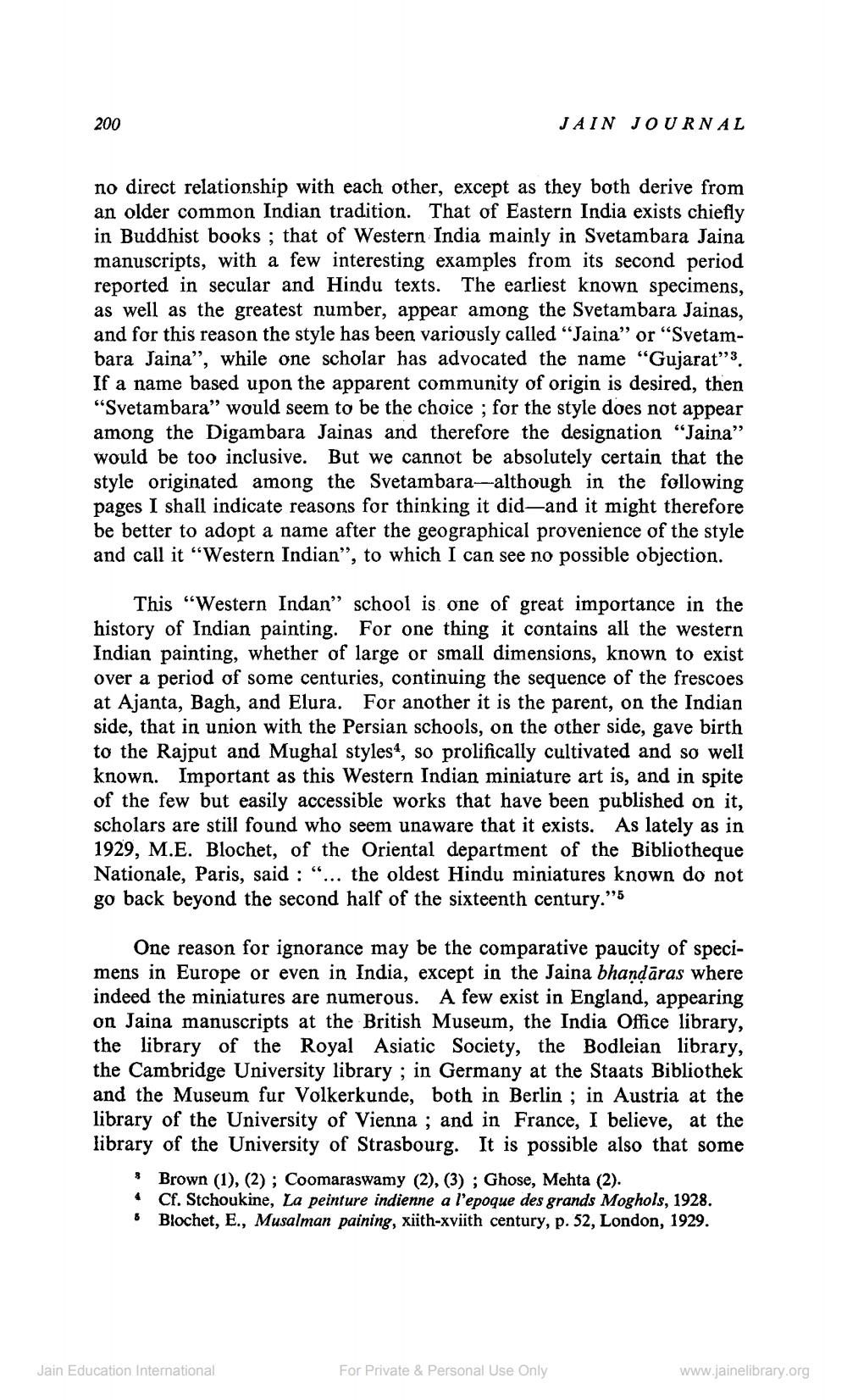Book Title: Jain Journal 1970 04 Author(s): Jain Bhawan Publication Publisher: Jain Bhawan Publication View full book textPage 6
________________ 200 JAIN JOURNAL no direct relationship with each other, except as they both derive from an older common Indian tradition. That of Eastern India exists chiefly in Buddhist books; that of Western India mainly in Svetambara Jaina manuscripts, with a few interesting examples from its second period reported in secular and Hindu texts. The earliest known specimens, as well as the greatest number, appear among the Svetambara Jainas, and for this reason the style has been variously called “Jaina" or "Svetambara Jaina”, while one scholar has advocated the name "Gujarat”3. If a name based upon the apparent community of origin is desired, then "Svetambara" would seem to be the choice ; for the style does not appear among the Digambara Jainas and therefore the designation "Jaina" would be too inclusive. But we cannot be absolutely certain that the style originated among the Svetambara-although in the following pages I shall indicate reasons for thinking it did-and it might therefore be better to adopt a name after the geographical provenience of the style and call it "Western Indian", to which I can see no possible objection. This “Western Indan" school is one of great importance in the history of Indian painting. For one thing it contains all the western Indian painting, whether of large or small dimensions, known to exist over a period of some centuries, continuing the sequence of the frescoes at Ajanta, Bagh, and Elura. For another it is the parent, on the Indian side, that in union with the Persian schools, on the other side, gave birth to the Rajput and Mughal styles, so prolifically cultivated and so well known. Important as this Western Indian miniature art is, and in spite of the few but easily accessible works that have been published on it, scholars are still found who seem unaware that it exists. As lately as in 1929, M.E. Blochet, of the Oriental department of the Bibliotheque Nationale, Paris, said: "... the oldest Hindu miniatures known do not go back beyond the second half of the sixteenth century.''5 One reason for ignorance may be the comparative paucity of specimens in Europe or even in India, except in the Jaina bhandāras where indeed the miniatures are numerous. A few exist in England, appearing on Jaina manuscripts at the British Museum, the India Office library, the library of the Royal Asiatic Society, the Bodleian library, the Cambridge University library ; in Germany at the Staats Bibliothek and the Museum fur Volkerkunde, both in Berlin ; in Austria at the library of the University of Vienna ; and in France, I believe, at the library of the University of Strasbourg. It is possible also that some * Brown (1), (2); Coomaraswamy (2), (3) ; Ghose, Mehta (2). Cf. Stchoukine, La peinture indienne a l'epoque des grands Moghols, 1928. 6 Blochet, E., Musalman paining, xiith-xviith century, p. 52, London, 1929. Jain Education International For Private & Personal Use Only www.jainelibrary.orgPage Navigation
1 ... 4 5 6 7 8 9 10 11 12 13 14 15 16 17 18 19 20 21 22 23 24 25 26 27 28 29 30 31 32 33 34 35 36 37 38 39 40 41 42 43 44 45 46 47 48 49 50 51 52 53 54 55
